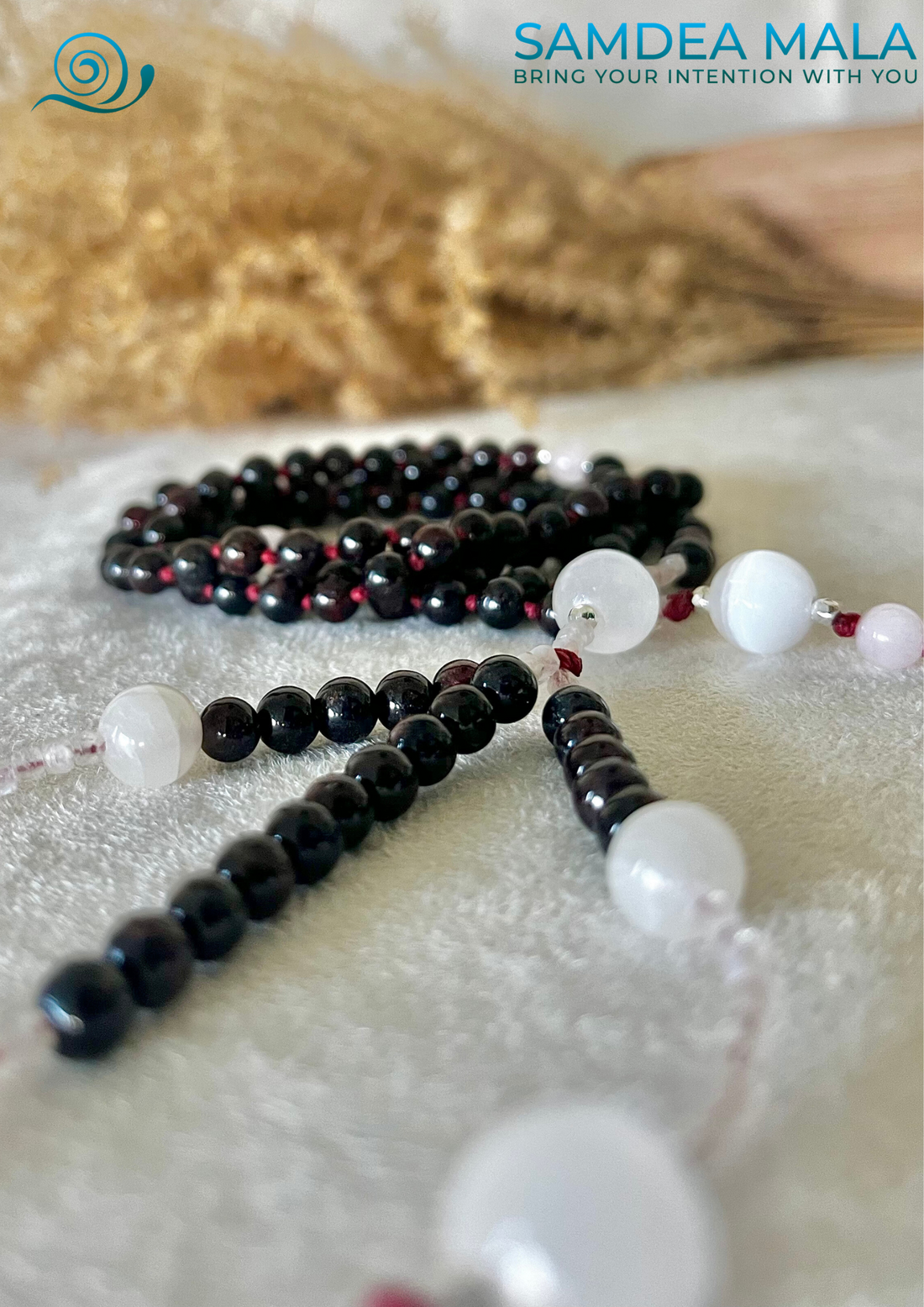
JUZU, THE JAPANESE MALA
Share
JUZU, THE JAPANESE MALA
The juzu (also known as nenju, butsuren, or, in broader contexts, japamala) serves a similar purpose to the traditional mala but features significant differences in construction and usage. More complex and elaborate than the classic mala, the juzu varies according to religious schools, with specific configurations and unique practices. Each Japanese Buddhist tradition has its own juzu, and its use changes depending on the practice, such as kano, ki-to, or goma, where practitioners follow particular rituals and gestures.
COMPOSITION AND MEANING OF THE JUZU
The traditional juzu consists of 108 main beads arranged in a ring, with two larger beads representing Buddha Shakyamuni and Buddha Tahō, and four smaller beads symbolizing the Bodhisattvas of the Earth. The five tassels represent the head, arms, and legs of the individual, reminding practitioners of the 108 desires or afflictions that cloud the mind.
Simpler versions with fewer beads (27, 54) and larger versions with 1,080 beads used by monks also exist. During chanting, the juzu is held between the hands in gassho (prayer gesture), and the beads are moved to maintain rhythm and focus. It is a tool for purification and a symbol of spiritual connection.
JUZU IN THE NICHIREN SCHOOL: “NAM MYOHO RENGE KYO”
The juzu is used to count mantra repetitions across various Japanese Buddhist traditions. In the Nichiren school, the juzu has a unique structure designed for chanting the mantra “Nam Myoho Renge Kyo,” the cornerstone of Nichiren’s philosophy. Nichiren, a 13th-century monk, emphasized the Lotus Sutra as the primary path to enlightenment, teaching that each individual can achieve happiness and harmony through consistent practice.
The origin of the juzu is linked to a story from the Buddha’s time. It is said that a king, troubled by the difficulties in his kingdom, was advised by the Buddha to string 108 berries and recite the Buddha’s name while touching each bead. This practice brought peace and harmony to the kingdom. Today, the juzu serves as a reminder of mindfulness and inner transformation.
In the Nichiren tradition, the juzu represents:
- The duality of life, with the two sections of beads symbolizing suffering and joy, in a continuous cycle of cause and effect.
- The rhythm of chanting, reflecting the constant flow of life and the practitioner’s determination.
- Spiritual protection, with the side tassels serving as symbols of strength and faith in the Lotus Sutra.
Different styles of juzu exist: lay practitioners use versions with five symbolic tassels, while priests carry more elaborate ones, reflecting their spiritual commitment. Materials range from sandalwood, symbolizing serenity, to stones like amethyst and quartz, representing clarity and protection.
CURIOSITIES AND LEGENDS
The juzu is rich with stories and deep meanings. One tale recounts how Kūkai, a revered monk, brought a crystal juzu from China to Japan, associating it with purity and protection. During the Kamakura period, monks used giant juzu in collective ceremonies, counting millions of prayers as an act of purification.
In Nichiren and Shingon traditions, colorful tassels represent the five Buddhas and their wisdom, balancing energies and providing protection. Additionally, the juzu is believed to accumulate spiritual energy from each chant, serving as an amulet against negative influences.
Beyond its use as a chanting aid, the juzu is a symbol of identity and belonging for practitioners, a tool of faith, and a companion in inner transformation. It is treated with great respect: damaged pieces are ceremonially disposed of at Shinto temples, reflecting the profound spiritual value it holds.



